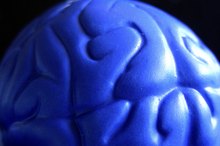Side Effects of Overdose With Lisinopril
Lisinopril is normally prescribed for hypertension or during a heart attack to help relax blood vessels and reduce blood pressure 13. Dosing may start from 5mg to 20mg daily, with any amount above the prescribed dose considered an overdose. Although overdosing is normally pretty well tolerated, acute overdoses, those involving children or overdosing over an extended period of time could have significant negative side effects.
If you are experiencing serious medical symptoms, seek emergency treatment immediately.
Immediate Side Effects
The most common immediate side effect from overdosing on lisinopril is a drop in blood pressure, which can cause fainting, dizziness or extreme weakness 13. Mayo Clinic staff say there is more danger from the after effects of the drop in pressure depending on what the patient was doing at the time of the blood pressure drop than internal harm to the patient 1. Injuries from falling or loss of control while operating machinery, for instance, could be life-threatening to the patient or to those who could be affected by uncontrolled machinery or vehicles.
Chronic Overdose Side Effects
What Are the Effects of Lack of Oxygen to the Brain?
Learn More
Overdosing over an extended period of time could cause internal organ damage due to loss of oxygen, which is normally carried to the brain, heart and major organs by blood flow. Renal failure is possible, due to oxygen deprivation, as is other major organ failure. Mayo Clinic staff say such an event is unlikely unless the patient receives no medical care whatsoever.
Side Effects Lessen With Time
A report by the Emergency Medical Journal of August 2006 states that the primary drop in blood pressure occurs immediately after the lisinopril overdose and has a lessening effect with time, especially if fluids are given to lessen the impact 13. The Scottish Poisons Information Bureau, Royal Infirmary of Edinburgh report followed 33 cases of overdosing from 2000 through 2005 with overdosing amounts of from seven to 42 times the recommended dose ingested. The conclusion of the study was that if severe low blood pressure effects had not occurred within six hours of the onset, the patient could be released without ill effect 1.
Allergic Reactions
What Is Acute Paranoia?
Learn More
Allergic reaction, which anyone ingesting lisinopril could experience, will tend to be more pronounced if the amount of the medication is above the recommended dose 3. If a person experiences facial swelling, trouble breathing, hives, irregular heartbeat or an extreme stomachache, she will need immediate medical treatment. Vomiting may also indicate an allergic reaction and is cause for a medical consult.
Related Articles
References
Writer Bio
Richard Nilsen writes poetry, fiction, features and news stories in upstate New York. He was an emergency mental-health consultant for 20 years and directed a mentoring agency for a decade. Nilsen is a black-fly control technician in the Adirondack Park, where he enjoys hiking, biking and boating.









